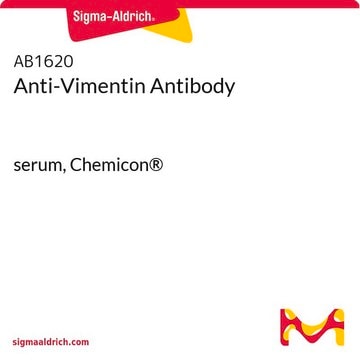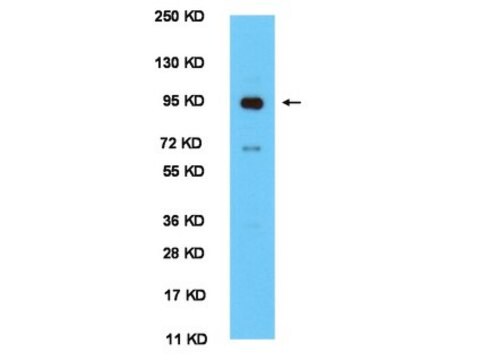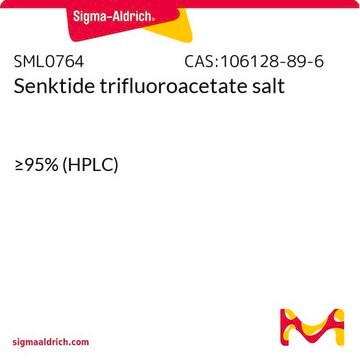MABF3068
Anti-CD163 Antibody, clone MAC2-158
Sinónimos:
Scavenger receptor cysteine-rich type 1 protein M130;Hemoglobin scavenger receptor
About This Item
Productos recomendados
origen biológico
mouse
Nivel de calidad
conjugado
unconjugated
forma del anticuerpo
purified antibody
tipo de anticuerpo
primary antibodies
clon
MAC2-158, monoclonal
mol peso
calculated mol wt 125.45 kDa
purificado por
using protein G
reactividad de especies
human
envase
antibody small pack of 100 μg
técnicas
flow cytometry: suitable
immunocytochemistry: suitable
immunohistochemistry (formalin-fixed, paraffin-embedded sections): suitable
immunoprecipitation (IP): suitable
western blot: suitable
isotipo
IgG1κ
secuencia del epítopo
N-terminal
Nº de acceso Protein ID
Nº de acceso UniProt
Condiciones de envío
ambient
modificación del objetivo postraduccional
unmodified
Descripción general
Especificidad
Inmunógeno
Aplicación
Evaluated by Immunohistochemistry (Paraffin) in human thymus tissue sections.
Immunohistochemistry (Paraffin) Analysis: A 1:250 dilution of this antibody detected CD163 in human thymus tissue sections.
Tested Applications
Immunohistochemistry (Paraffin) Analysis: A 1:250 dilution from a representative lot detected CD163 in human liver tissue sections.
Flow Cytometry Analysis: A representative lot detected CD163 in Flow Cytometry applications Maniecki, M.B., et al. (2011). Immunobiology. 216(8): 882-90; Krijgsman, D., et al. (2020). Int J Mol Sci. 21(16): 5925).
Immunocytochemistry Analysis: A representative lot detected CD163 in Immunocytochemistry applications (Maniecki, M.B., et al. (2011). Immunobiology. 216(8): 882-90).
Flow Cytometry Analysis: A representative lot detected CD163 in human peripheral blood mononuclear cells (PBMC) (Data courtesy of Jane Collins, Research Laboratory Manager of Dr. Paul M. Guyre s Lab, Department of Microbiology and Immunology, Geisel School of Medicine, Dartmouth College, NH, USA).
Western Blotting Analysis: A representative lot detected CD163 in Western Blotting applications (Maniecki, M.B., et al. (2011). Immunobiology. 216(8): 882-90).
Immunoprecipitation Analysis: A representative lot immunoprecipitated CD163 in Immunoprecipitation applications (Morganelli, P.M., et al. (1988). J Immunol. 140(7): 2296-304).
Note: Actual optimal working dilutions must be determined by end user as specimens, and experimental conditions may vary with the end user
Forma física
Almacenamiento y estabilidad
Otras notas
Cláusula de descargo de responsabilidad
¿No encuentra el producto adecuado?
Pruebe nuestro Herramienta de selección de productos.
Código de clase de almacenamiento
12 - Non Combustible Liquids
Clase de riesgo para el agua (WGK)
WGK 1
Certificados de análisis (COA)
Busque Certificados de análisis (COA) introduciendo el número de lote del producto. Los números de lote se encuentran en la etiqueta del producto después de las palabras «Lot» o «Batch»
¿Ya tiene este producto?
Encuentre la documentación para los productos que ha comprado recientemente en la Biblioteca de documentos.
Nuestro equipo de científicos tiene experiencia en todas las áreas de investigación: Ciencias de la vida, Ciencia de los materiales, Síntesis química, Cromatografía, Analítica y muchas otras.
Póngase en contacto con el Servicio técnico








